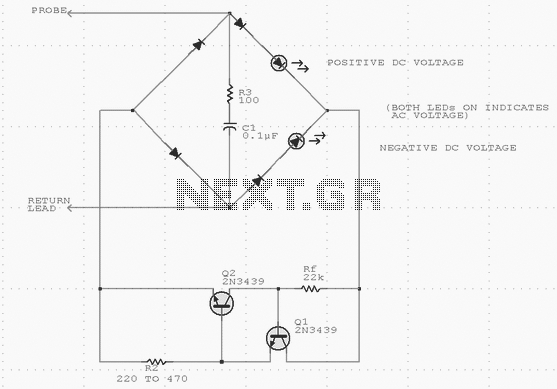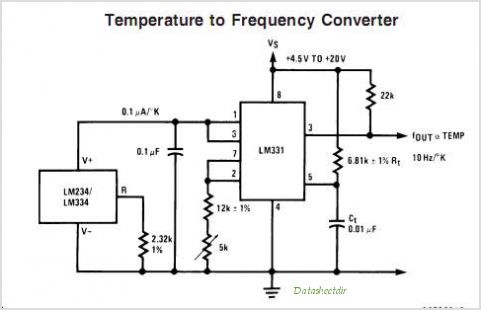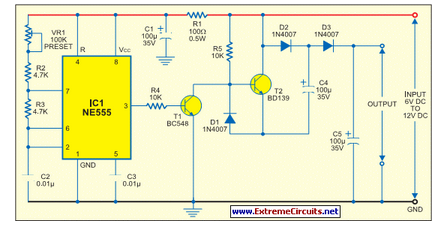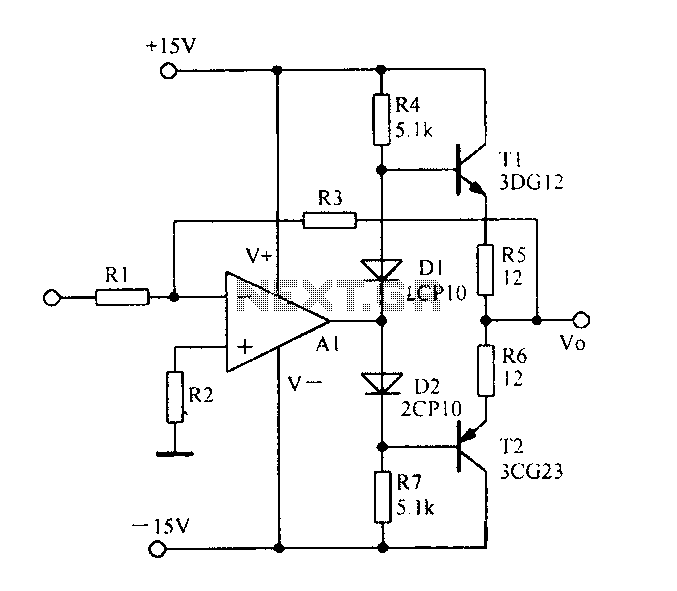
PHOTODIODE CURRENT TO VOLTAGE CONVERTER
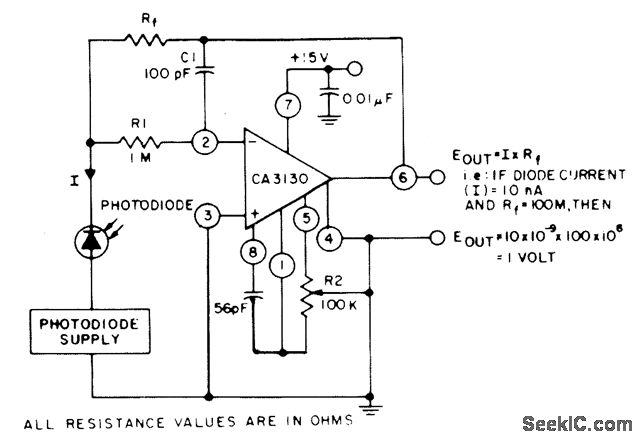
The circuit employs three CA3130 BiMOS operational amplifiers in an application that is sensitive to sub-picoampere input currents. It generates a ground-referenced output voltage that is proportional to the input current flowing through the photodiode.
The described circuit utilizes three CA3130 BiMOS operational amplifiers, which are specifically designed for high-impedance applications, making them suitable for detecting very low input currents, such as those in the sub-picoampere range. The CA3130 op-amps feature a unique combination of CMOS and bipolar technologies, which allows for low noise performance and high input impedance, essential for applications involving photodiodes.
In this configuration, the photodiode is connected in such a way that the current generated by incident light flows into the op-amps. The first op-amp in the circuit typically functions as a transimpedance amplifier, converting the photocurrent from the photodiode into a corresponding voltage. The feedback resistor used in this stage is critical as it sets the gain of the circuit, determining the output voltage level based on the input current.
The subsequent op-amps may be configured for further amplification and signal conditioning, ensuring that the output remains stable and accurate. The output voltage from the final op-amp stage is ground-referenced, which is vital for interfacing with other electronic components or systems that require a common ground reference. This design allows for the effective measurement and monitoring of low-level currents, making it suitable for applications such as light detection, sensor interfaces, and precision measurement systems.
The layout of the circuit should consider minimizing parasitic capacitance and inductance, which can affect the performance at such low current levels. Proper grounding techniques and shielding may also be necessary to reduce noise and improve the overall stability of the circuit.The circuit uses three CA3130 BiMOS op amps in an application sensitive to sub-picoampere input currents. The circuit provides a ground-referenced output voltage proportional to input current flowing through the photodiode.
🔗 External reference
The described circuit utilizes three CA3130 BiMOS operational amplifiers, which are specifically designed for high-impedance applications, making them suitable for detecting very low input currents, such as those in the sub-picoampere range. The CA3130 op-amps feature a unique combination of CMOS and bipolar technologies, which allows for low noise performance and high input impedance, essential for applications involving photodiodes.
In this configuration, the photodiode is connected in such a way that the current generated by incident light flows into the op-amps. The first op-amp in the circuit typically functions as a transimpedance amplifier, converting the photocurrent from the photodiode into a corresponding voltage. The feedback resistor used in this stage is critical as it sets the gain of the circuit, determining the output voltage level based on the input current.
The subsequent op-amps may be configured for further amplification and signal conditioning, ensuring that the output remains stable and accurate. The output voltage from the final op-amp stage is ground-referenced, which is vital for interfacing with other electronic components or systems that require a common ground reference. This design allows for the effective measurement and monitoring of low-level currents, making it suitable for applications such as light detection, sensor interfaces, and precision measurement systems.
The layout of the circuit should consider minimizing parasitic capacitance and inductance, which can affect the performance at such low current levels. Proper grounding techniques and shielding may also be necessary to reduce noise and improve the overall stability of the circuit.The circuit uses three CA3130 BiMOS op amps in an application sensitive to sub-picoampere input currents. The circuit provides a ground-referenced output voltage proportional to input current flowing through the photodiode.
🔗 External reference
